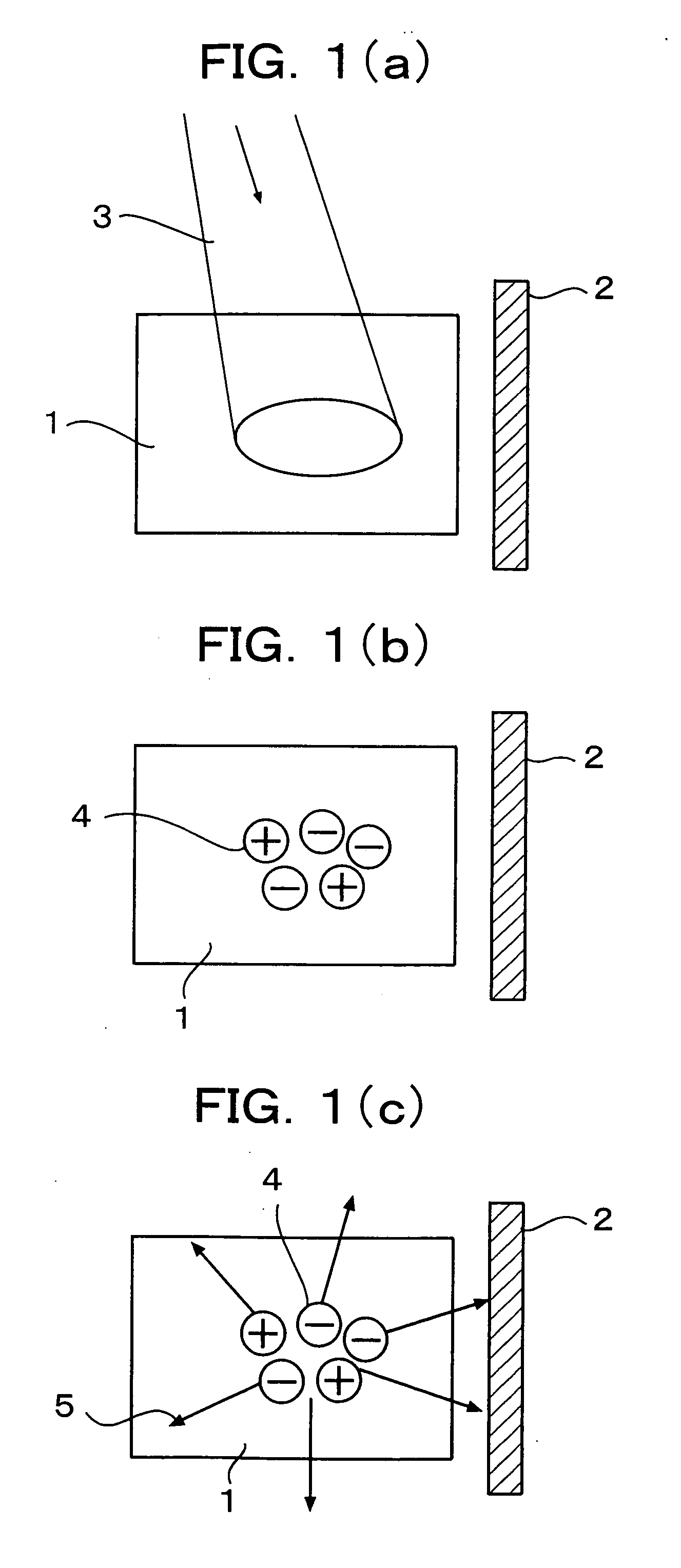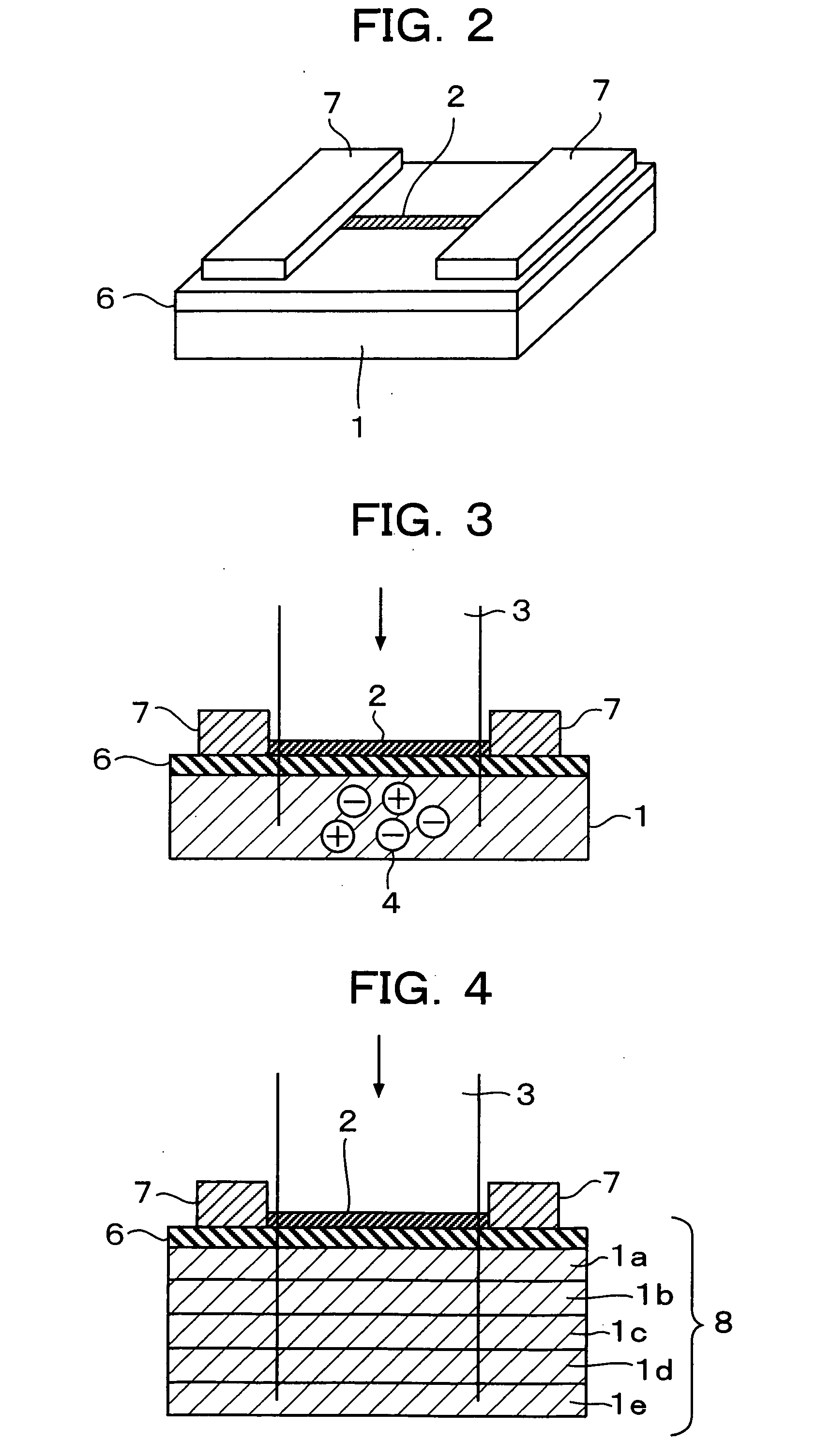Optical sensor
- Summary
- Abstract
- Description
- Claims
- Application Information
AI Technical Summary
Benefits of technology
Problems solved by technology
Method used
Image
Examples
first embodiment
[0043]FIG. 2 and FIG. 3 are views for explaining the present invention. FIG. 2 is a perspective view of an optical sensor, and FIG. 3 is a sectional view of the optical sensor.
[0044] As shown in these drawings, a carbon nanotube 2 is formed on a photoconductive material 1 through an insulating layer 6, and electrodes 7 and 7 for applying an appropriate voltage are provided in the opposite ends of the carbon nanotube 2.
[0045] In the case of this embodiment, a silicon substrate (photoconductive material 1) having photoconductivity is used, the insulating layer 6 of silicon oxide is formed thereon, and the carbon nanotube 2 is disposed thereon.
[0046] The photoconductive material 1 may be produced by crystal growth with a vacuum evaporation apparatus such as a molecular beam epitaxy apparatus (MBE apparatus), or a chemical vapor deposition apparatus (CVD apparatus) such as a metal-organic chemical vapor deposition apparatus (MOCVD) . The photoconductive material 1 may be n-type, p-typ...
second embodiment
[0048]FIG. 4 is a sectional view of an optical sensor for explaining the present invention. This embodiment uses a multilayer structure 8 of a plurality of kinds of photoconductive materials 1a to 1e having photoconductivity in different wavelength ranges. In such a manner, it is possible to produce an optical sensor having sensitivity all over the photosensitive wavelength ranges of the respective photoconductive materials 1.
[0049] The photosensitive wavelength ranges in the photoconductive materials 1 will be shown below by way of example. Silicon (Si) ranges over 200-1,100 nm; germanium (Ge), 500-1,500 nm; gallium arsenide (GaAs), 200-900 nm; indium gallium arsenide (InGaAs), 650-2,900 nm; and indium arsenide (InAs), 1,300-3,900 nm.
[0050] Innumerable combinations can be set, for example, using aluminum arsenide (AlAs), aluminum gallium arsenide (AlGaAs), indium aluminum arsenide (InAlAs), gallium arsenide phosphide (GaAsP), indium gallium arsenide phosphide (InGaAsP), indium ant...
third embodiment
[0054]FIG. 5 is a sectional view of an optical sensor for explaining the present invention. In this embodiment, a gate electrode 9 is provided under a photoconductive material 1 so as to form a field effect transistor structure.
PUM
 Login to View More
Login to View More Abstract
Description
Claims
Application Information
 Login to View More
Login to View More - R&D
- Intellectual Property
- Life Sciences
- Materials
- Tech Scout
- Unparalleled Data Quality
- Higher Quality Content
- 60% Fewer Hallucinations
Browse by: Latest US Patents, China's latest patents, Technical Efficacy Thesaurus, Application Domain, Technology Topic, Popular Technical Reports.
© 2025 PatSnap. All rights reserved.Legal|Privacy policy|Modern Slavery Act Transparency Statement|Sitemap|About US| Contact US: help@patsnap.com



